Citizenship American Fields Biology, zoology | Name Cornelia Clapp | |
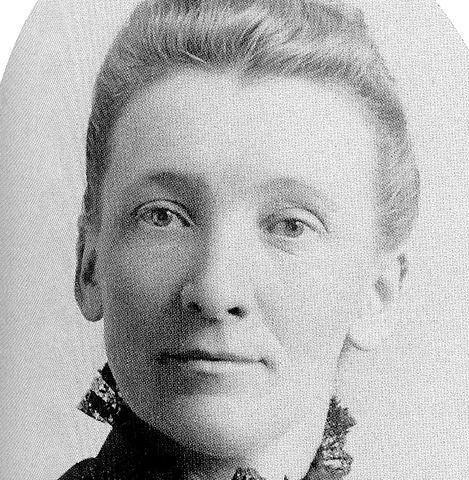 | ||
Cornelia Maria Clapp (March 17, 1849 – December 31, 1934) was an American zoologist and academic specializing in marine biology. She was born in Montague, Massachusetts, the first daughter and oldest child of two teachers, and was rated as one of the top zoologists in the United States in her lifetime.
Contents
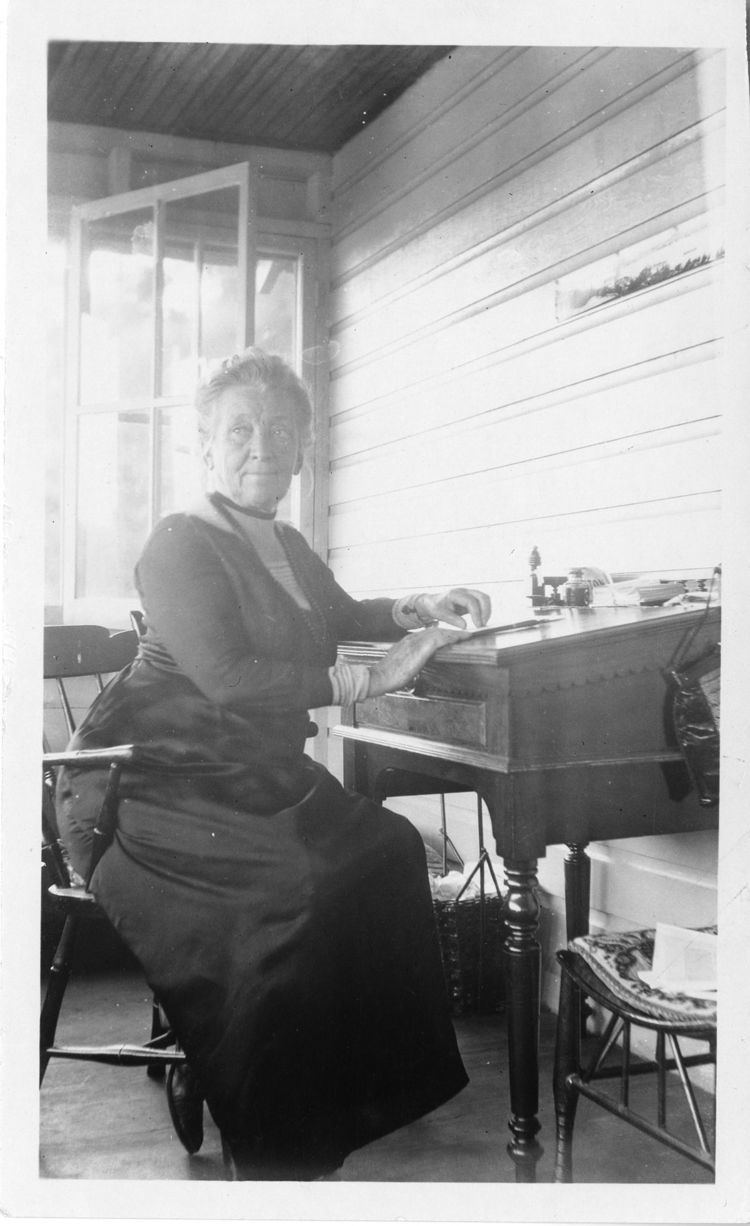
Clapp attended Syracuse University and the University of Chicago, earning both the first and second Ph.B. degrees awarded to women in the United States, in 1889 from Syracuse and 1896 from Chicago. Mount Holyoke’s Cornelia Clapp Laboratory, built in 1924 to house the school’s biology classes, was named in her honor.
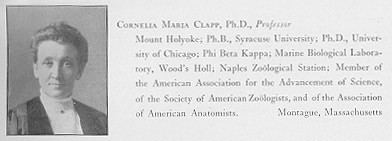
Education and career
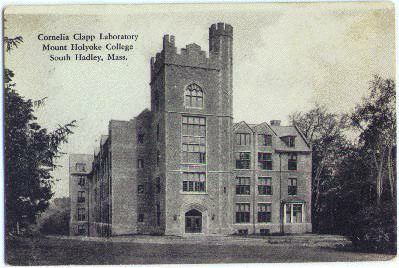
Clapp completed the equivalent of an undergraduate program at Mount Holyoke Female Seminary (the forerunner of today’s Mount Holyoke College) in 1871 before spending one year as a Latin teacher at a boys' boarding school in Andalusia, Pennsylvania.
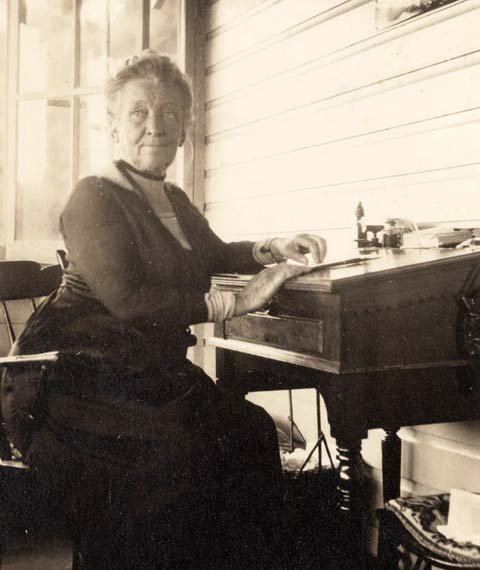
She returned to Mount Holyoke in 1872, teaching mathematics and natural history before becoming the college's gymnastics instructor from 1876 to 1891.
Clapp continued her extensive postgraduate studies at Louis Agassiz’s Anderson School of Natural History on Penikese Island, Buzzard's Bay, MA in 1874. She adopted Agassiz's dictum "Study nature, not books!" and applied it to her own teaching.
She introduced her learned knowledge via an embryology course at Mount Holyoke, supplanted by specimens from alumni abroad. Along with other New England entomologists, Clapp collected insects from the White Mountains of New Hampshire in the summer of 1875 and from the mid-Atlantic states in 1877. (Stops included the Johns Hopkins University marine station in Beaufort, SC and the Smithsonian Institution in Washington, D.C.)
Clapp also completed brief studies on chick embryos and earthworms at the Massachusetts Institute of Technology under W.T. Sedgwick and at Williams College in the early 1880s. Beginning in 1888, Clapp was affiliated with the Marine Biological Laboratory at Woods Hole, MA, where she conducted laboratory research and later became a lecturer and a trustee. Her doctoral dissertation on toadfish was published in the Journal of Morphology in 1889.
When Mount Holyoke made the transition from seminary to college in 1888, Clapp took a three-year leave in order to obtain a doctorate at the University of Chicago. When she returned to Mount Holyoke, she helped organize the department of zoology, and in 1904 she was named professor of zoology. Although she was primarily known as an educator and did not author many scientific research papers, she was named in 1906 as being among the 150 most prominent zoologists in the U.S. by the journal American Man of Science.
Legacy
At a time when the world of science was just opening up to women, Cornelia Clapp's influence as a teacher was great and enduring. While she published little during her career, her major influence was to extend scientific knowledge and opportunity to women through education.
Her direct teaching manner can be felt in the experience of Louise Baird Wallace, who arrived at Mount Holyoke in 1891. Her school principal in Ohio told her: “You ought to study under Dr. Clapp. She keeps live frogs in tanks.” Of Clapp, Louise wrote, “I came, I saw; she conquered. I felt then and have felt ever since that I was never fully alive until I knew her.”
